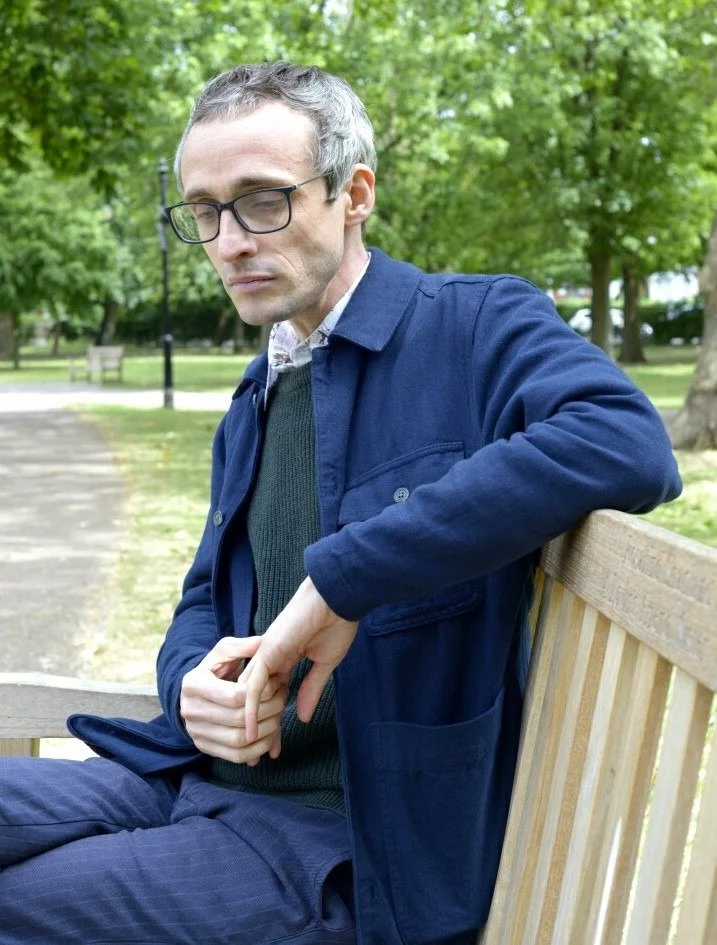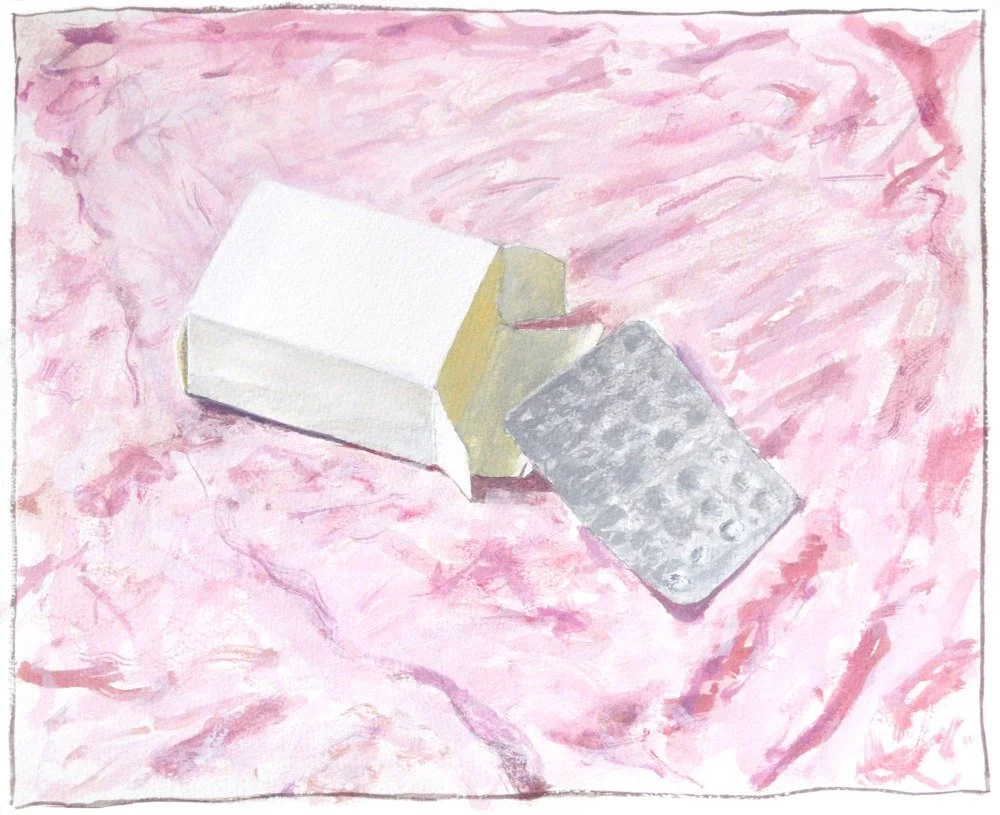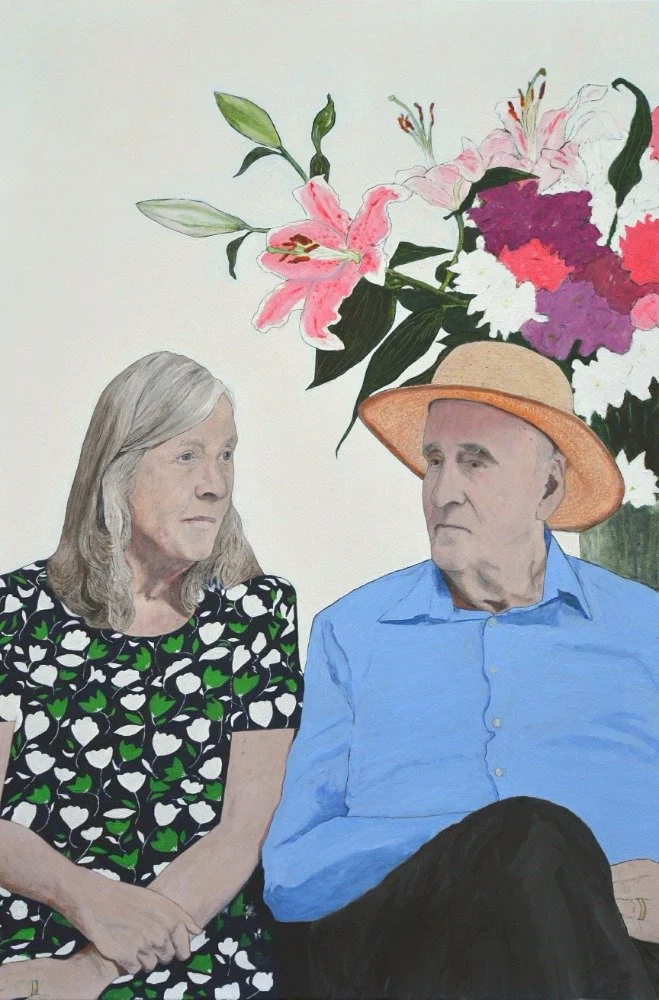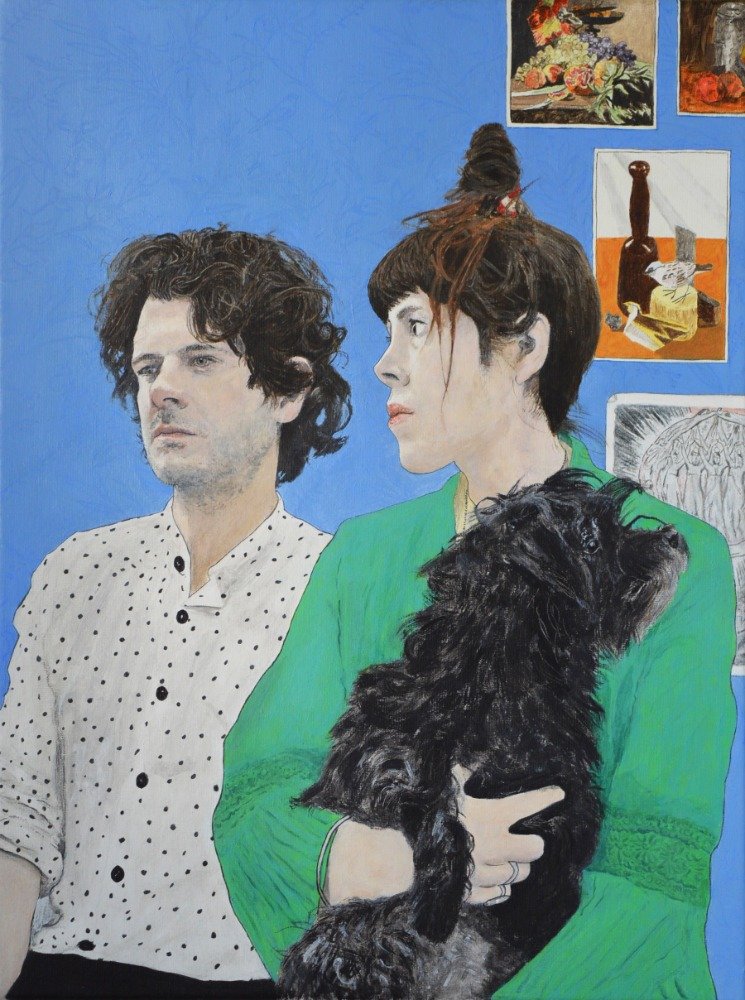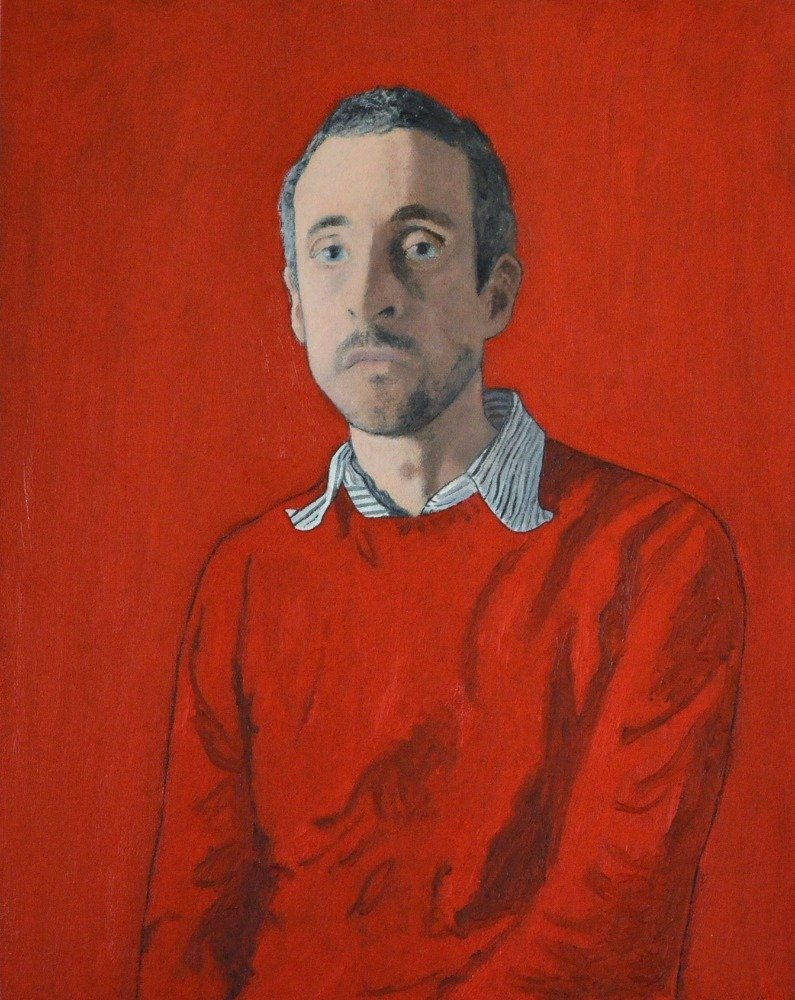ARTIST INTERVIEW: TOM LOFFILL
Tell me about yourself and your journey to becoming an artist. Why is art a sine qua non to you?
I studied fine art some time back. Going into it I loved drawing and painting but by the end I’d lost all interest in being an artist. I think it was the wrong course for me. Writing, recording and performing music became my main interest after that. I started to come back to painting about 7 years ago. It was initially entirely commercial, printing t-shirts with my own designs, but it gradually became less about trying to simply sell stuff and more about drawing and painting the things I really wanted to draw and paint. I did paintings of some of my favourite London scenes and then made prints of them. I was going out and doing the sketches at the actual locations, but then I got ill and was pretty bed bound for a while. I started to think about what I could paint if I wasn’t going to be able to get out of bed. The sunlight shining on my box of pills at the bottom of the bed looked really pretty. I made a painting of that and entered it in the Royal Academy Summer Exhibition. It got in, I got better, and I kept painting.
When I was a kid I used to draw and paint compulsively apparently, so it’s something I’ve always had in me, I don’t know where the need to do it comes from. Increasingly I think my work is a bit like a diary, taking notes on the things around me, the people and things that interest me. I was just looking through my sketch books and seeing drawings of all these people I loved who are no longer in my life for one reason or another. It's pretty sad, but a record.
How has your style developed over time? Describe a technique that you use to apply the paint.
I have a kind of ideal in mind which I can’t quite see or reach. It’s somewhere between the precise linear cleanness of something like Japanese prints on one hand, and the apparent looseness and brashness of expressionist painting on the other. And my development, if there is any, is about pinging back and forth between those two poles, trying to find something like a happy medium, or a unified theory.
I find it really hard to talk about technique. The physical process is not something that I analyse closely, it’s very intuitive. But one example I could give because it does stand out is when I painted the portrait of my friends Ben and Liz with their dog Rola. I painted Rola using a toothbrush to try and get the wildness of her fur, I dragged the paint kind of lightly, rhythmically.
You have produced various self portraits. in your ‘Self Portrait with Striped Shirt & Illustrations’ (2021) the colour blue features heavily compared to the vast amount of red used in ‘Red Self Portrait’ (2023). How have you used colour to convey a narrative? Has the way you perceive yourself changed from 2021-2023?
Colour wasn’t so central to the blue self portrait when I started out. I was thinking of a pose in a Botticelli painting which I wanted to roughly imitate. The background colour was the last thing I thought of when I was working on it. The picture sat unfinished for several weeks with this wrong kind of golden colour in the background. Sometimes I have to live with a picture being wrong for a long time before I can’t take it any more and work out how to fix it. I don’t remember why I landed on that blue, although blue does make me think of religious paintings, and there are some spiritual themes in that painting.
The red painting on the other hand was intended to be about the colour red from the start. I got a really bright red jumper and wanted to paint it and I guess I was thinking “how can I emphasise just how red this is?” Of course you can make the background green (the complimentary colour) but that might have been a bit Christmasy, so I thought it might be interesting to oversaturate the whole thing with red. I’m always trying to make my figurative paintings more like abstract paintings, and I wanted this to be like a red abstract painting and the face almost incidental. I didn’t quite pull that off, if anything the face stands out more being in isolation, but still I think the balance works.
How do you establish a composition to reflect your sitter’s character? What do you believe is key to achieving a likeness?
Often the things I'll include in a portrait come from conversation during the sitting. In some of my portraits I've put pictures tacked to the wall in the background that refer to things we talked about, so hopefully in some oblique way that gets through to the viewer. In a couple of pictures they're holding drawings they made, again, this developed out of conversation. I might also include objects or details that give clues to things we talked about.
Character is a strange thing though, and it's strange to think that you could represent physically an abstract idea. I am most interested in superficial things, and the shape of things: strands of hair, the way they hold their hands, colours and patterns of clothing, the head at a certain angle. A sense of character seems to arise when you get those things in harmony.
I feel like getting a likeness shouldn’t be too difficult in theory, although it can be in practice. Again I think it’s about a harmony, how everything relates to everything else, and you have to pay close attention to that. I try to get the likeness in the face first so I can feel confident going ahead with the rest of the painting, and the face is often one of the last things I’ll return to as well. Towards the end of the painting, even though the likeness is there, there’s often something missing, a vitality. There’s a flatness there, and that’s the harder thing to get: a certain vibrancy or vitality, and if I can get close to bringing that out then I can feel like the painting is finished.
Who would be your dream sitter to paint, and why?
Living person would maybe be Reese Witherspoon, she was in ‘Just Like Heaven’ which is one of my favourite films. She plays a ghost who is stuck between life and death and has a romantic affair with Mark Ruffalo. I did start a series of paintings based on the film but I've only been able to finish one so far.
Who is your favourite artist? If they were sat next to you right now, what would you ask them? Do they have an influence on your work?
My favourite painter is probably Malevich. I’m probably painting now because of an exhibition I saw with his work which excited me so much, it seemed like artwork from another planet. I’m still trying to learn the lessons of his colour, and spatial arrangements. The red self portrait may have come from his influence, his red and black abstract paintings, that totality. My pills painting I think was influenced by him too. If he were here I’d ask him what it was like being an artist under Stalin, and how he managed to avoid being bumped off.
What has been your greatest achievement/challenge as an artist so far?
Maybe the painting of my parents, that was very difficult and took a long time. I really wanted to get it as right as I possibly could. And then when it was selected for the Royal Society of Portrait Painters exhibition, I was really happy we were able to share that.
Are you currently working on any new exciting projects?
I’ve taken a detour from portrait painting which has been a lot of fun, trying to do looser and freer paintings on different themes, working on paper instead of canvas and trying not to get hung up. Just making, not over thinking, seeing what happens.
Why do you think art is important in society?
I don’t know why, but I know that it is. It doesn’t seem to be enough to just exist, people have to make representations of existence. So we don’t know why people made cave paintings tens of thousands of years ago, but we know that hunting the animals wasn’t enough, they had to make paintings of themselves hunting the animals. It seems to be something innately human, something essential. I think everyone has a creative side, even if they wouldn't recognise it as such. And people who don’t feel the need to make images still need to see them. People will queue up for hours in the rain to look at images. I do, I don’t know why.


